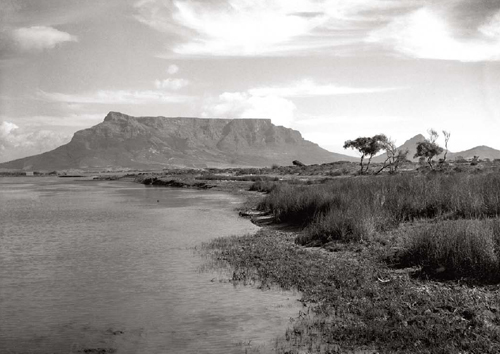


In 1897, a company named Milnerton Estates Ltd purchased the properties known as Paarden Island and Jan Biesjes Kraal, with the intention of laying out a township to be known as Milnerton, in honour of Lord Milner, the British High Commissioner. A railway line, connecting the new township with Cape Town, was also planned.
It was only in 1903 that the first plots were put up for sale by public auction. On Boxing Day in the same year, the first trains ran from Cape Town station to Milnerton, and in 1904 regular services were introduced. A tea bungalow, concert hall and dancing pavilion were among the attractions offered to visitors. Further plots were auctioned in 1905. A racecourse was the next amenity to be suggested, and the first race took place on 28 May 1908.
The new township was popular, being both close to the city and affordable. From its beginnings as a tranquil residential township, it has grown into a bustling suburb of Cape Town.
The beach at Milnerton is popular with walkers and surfers, and offers a panoramic view across the bay to Table mountain.
The Diep River flows through the Rietvlei Wetland Reserve to Milnerton Lagoon and the sea. This reserve is one of the most important sites for waterbirds in the region, owing to the wide range of wetland habitats and the proximity of the sea. Stretches of typical Strandveld flora and fauna flourish where alien vegetation has been removed.


The beach at Blouberg affords one of the most famous views of Cape Town and Table Mountain. Many ships have been lost at Blouberg over the years, although few wrecks resulted in any loss of life. The earliest recorded wreck was that of the Sévere, a French man-of-war transporting soldiers from Mauritius to France, on 27 January 1784. In the 1800s a number of ships were wrecked: the Cerberus, on a voyage from Ceylon to London, was lost on 10 March 1821, and the John was lost on 4 December that year, although her cargo of spices and coffee was saved. The Sappho, on a voyage from Shanghai to London with a cargo of 600 tons of tea, was lost during a gale on 15 March 1864. A Russian ship, Onni, was wrecked on 7 February 1890. She was carrying a cargo of coal for the Gas Light Company.
On 9 October 1896, the Norwegian ship Atlas, a wooden ship of 1 296 tons under the command of Captain JL Marchussen, was wrecked on Blouberg Beach. She was carrying a cargo of teak from Asia. The Armenia, an Italian barque under the command of Captain Schaffina, collided with another vessel at the start of her voyage from Cape Town. The ship anchored off Blouberg, but then ran ashore on 9 June 1902 during a storm.
The most recent wreck at Blouberg was that of the Seli 1, a Turkish bulk carrier, which ran aground on 8 September 2009. The unsightly wreck lay just offshore for four years before explosives were used to collapse it onto the sea bed.